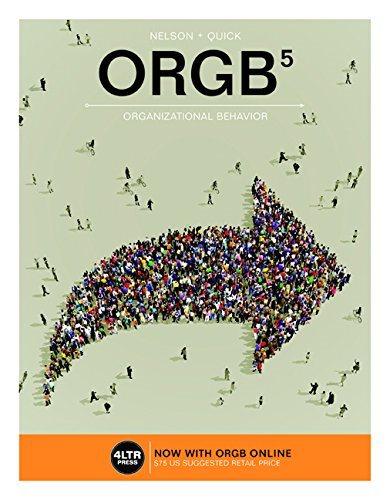Paying a child $200 to go one month without watching TV? Thats the kind of extreme action
Question:
Paying a child $200 to go one month without watching TV? That’s the kind of extreme action some parents will take to get their children to cooperate. Bribery? Maybe. Whether called bribery or motivation, the practice of linking monetary incentives with desired behavior has existed for years. Evidence shows that when organizations provide employees with financial incentives employees can change their behavior. Can similar financial incentives change student behavior?
This is the question that Harvard economist Roland Fryer, Jr., set out to answer using a series of experiments in the underperforming inner-city elementary schools across the country. Why inner-city schools? According to Fryer, “the average black 17-year-old reads at the same level as the average white 13-year-old.” Something had to be done to bridge that gap. Fryer conducted the experiments at elementary schools in four cities: Chicago, Dallas, Washington, and New York. He used various incentives. For example, in New York City, fourth graders could earn a maximum of $25 for good test scores, and seventh-graders could earn a maximum of $50. Students in Chicago were paid $50 for each A, $35 for each B, and $20 for each C with a maximum possible “salary” of $2,000 per year. Similar pay-for-performance schemes were tested in Washington and Dallas. Using mostly private funds, Fryer paid 18,000 kids a total of $6.3 million to boost their performance.
As with any experiment, researchers often do not get the results they expect, and Fryer’s was the same. The “treatment” had no effect on student performance in one of the cities where he expected the most success. In two of the other cities, his experiment yielded mixed results. Yet in another city, the results exceeded his expectations. Students who were paid all year performed better on standardized tests than those who were unpaid. Fryer’s plan did not come without its detractors. While some school officials were willing to try anything new to motivate students to learn, others strongly believed students should learn for learning’s sake and not for cash. The fact that Fryer’s test subjects were students in predominately minority schools hurt the case. One think-tank scholar called the plan racist.
Question
1. How is using extrinsic measures to motivate students any different from using intrinsic measures if the outcome is the same?
2. Do you believe using financial incentives to improve performance in predominantly minority schools is a racist strategy? Why or why not?
Step by Step Answer:

ORGB Organizational Behavior
ISBN: 9781305663916
5th Edition
Authors: Debra L. Nelson, James Campbell Quick





